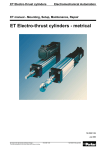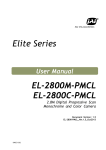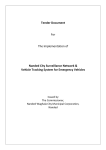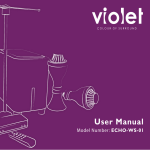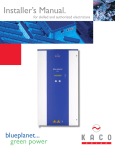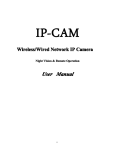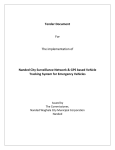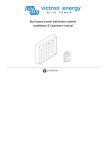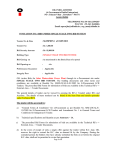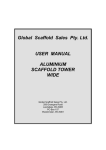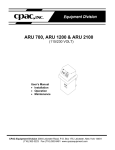Download Revised DTP for e-Tender No.588 Roof Top Solar
Transcript
TECHNICAL SPECIFICATIONS I. DEFINITION The Grid Connect Solar Power Generating System consists of mainly three components viz. the solar photovoltaic (SPV) array, module mounting structure and the power conditioning unit (PCU)/ inverter. The SPV array converts the solar energy into DC electrical energy. The module mounting structure holds the modules in required position and the DC electrical energy is converted to AC power by the PCU, which is connected to the power grid. The AC power output of the inverter is fed to the AC distribution board through metering panel and isolation panel. The 415 V AC output-3Ø of the system will be utilized and after synchronizing with the grid, can be exported to the grid. II. PV MODULE (S) 1. The PV module used in Grid Connected Solar Power system should have the latest addition of following IEC-PV Module qualification test or equivalent BIS Standard a. IEC 61215 ---- For Modules b. IEC 61730 ---- For Safety (Part 1 & 2) c. IEC 61701 --- For corrosion 2. The power output of the module (s) under STC should be as given in section scope of work. Modules of minimum 150 W output each or above output should be used. Photo / electrical conversion efficiency of SPV module shall be greater than 13% under STC 3. All materials used shall have a proven history of reliable and stable operation in external applications. It shall perform satisfactorily in relative humidity up to 80% with temperatures between -1 Deg C and +65 Deg C and with stand gust up to 200km/h from back side of the panel. The terminal box on the module should have a provision for opening for replacing the cable, if required. 4. A strip containing the following details should be laminated inside the module so as to be clearly visible from the front side. a. Name of the Supplier or distinctive Logo b. Model or Type No. c. Serial No. d. Year of make. 5. The rated output power of any supplied module shall not vary more than 3-5% from the average power rating of all modules. 6. The module frame is made of corrosion resistant materials, which is electrolytically compatible with the structural material used for mounting the module. 7. Protective devices against surges at the PV module shall be provided, if required. Low voltage drop bypass and / or blocking diode(s) may also be provided, if required. 8. Module Junction box (weather resistant) shall be designed for long life out door operation in harsh environment. 9. A minimum warranty of 20 (Twenty) years shall be given with degradation of power generated not exceeding 10% (Ten) over the entire period of 10 (Ten) years. 10.The solar modules shall have suitable encapsulation and sealing arrangements to protect the silicon cells from the environment. The arrangement and the material of encapsulation shall be compatible with the thermal expansion properties of the Silicon cells and the module framing arrangement/material. The encapsulation arrangement shall ensure complete moisture proofing for the entire life of the solar modules. 11.Each module shall have low iron tempered glass front for strength and superior light transmission. It shall also have tough multi layered polymer back sheet for environment protection against moisture and provide high voltage electrical insulation. 12.The modules and cell must be made in India. 13.Data sheet of the offered module along with their IEC certificate and third party test results must be submitted along with the offer giving details of peak power, peak current, short circuit current, fill factor, open circuit voltage, peak power voltage etc. Orientation and Tilt of PV Module Modules alignment and tilt angle shall be calculated to provide the maximum annual energy output. This shall be decided based on the location of array installation. III. EARTHING AND SURGE PROTECTIONS 1. The array structure of the PV modules shall be grounded properly using adequate numbers of earthing pits. All metal casing/ shielding of the plant shall be thoroughly grounded to ensure safety of the power plant. All the power conditioning unit and electricity metering unit having any exposed metal part must be grounded. 2. All the grounding must be double grounding. There should be a two separate grounding. 3. The SPV power plant shall be provided with lightning & over voltage protection. The source of over voltage can be lightning, atmosphere disturbance etc. Earthing and lightning protection: Earthing: The array structure of the PV yard shall be grounded properly using adequate number of earthing kits. All metal casing / shielding of the plant shall be thoroughly grounded to ensure safety of the power plant. Lightning: The SPV Power Plant shall be provided with lightning & over voltage protection. The main aim in this protection shall be to reduce the over voltage to a tolerable value before it reaches the PV or other sub system components. The source of over voltage can be lightning, atmosphere disturbances etc. Metal oxide variators shall be provided inside the Array Junction Boxes. In addition suitable MOV’s also shall be provided in the Inverter to protect the inverter from over voltage. IV. MECHANICAL COMPONENTS Metallic frame structure of galvanized steel with stands to be fixed on the roof of the building to hold the SPV module (s) one foot above roof level. The inclination angle should be best suitable to get the maximum output. All hardware, nuts, bolts should be cadmium passivated. Module mounting structure: 1. The array structure shall be made of hot dip galvanized MS angles of size not less than 50 mm x 50 mm x 6 mm size. The minimum thickness of galvanization shall be at least 70 (seventy) microns. All nuts & bolts shall be made of very good quality ISI grade stainless steel. The minimum clearance of the lowest part of the module structure and the developed ground level shall not be less than 500 mm. 2. Leg assembly of module mounting structure made of different diameter galvanized tubes may be accepted. The work should be completed with supply, fitting fixing of clamps, saddles, nut & bolts etc. While quoting the rate, the bidder may mention the design & type of structure offered. All nuts & bolts shall be made of very good quality stainless steel. 3. The structure shall be designed to allow easy replacement of any module and shall be in line with site requirements. The structure shall be designed for simple mechanical and electrical installation. It shall support SPV modules at a given orientation, absorb and transfer the mechanical loads to the ground properly. There shall be no requirement of welding or complex machinery at site. 4. The array structure shall be so designed that it will occupy minimum space without sacrificing the output from SPV panels at the same time it will withstand wind speed up to maximum 200 km/h. 5. The supplier/manufacturer shall specify installation details of the PV modules and the support structures with appropriate diagrams and drawings. 6. PCC ARRAY FOUNDATION BASE: The legs of the structures made with GI angles will be fixed and grouted in the PCC foundation columns made with 1:2:4 cement concrete. The minimum clearance of the lowest part of any module structure shall not be less 500 mm from ground level. While making foundation design, due consideration shall be given to weight of module assembly, maximum wind speed of 200 km/hr and seismic factors for the site. 7. The bidder can visit the site before quoting rate for civil works. After taking in to consideration all aspects of the site, roof top strength etc., the bidder shall quote for civil works. The foundation design of module structure design shall be submitted to SMC for approval. The work will have to be carried out as per designs approved by SMC. Junction Boxes 1. The junction boxes shall be dust, vermin and waterproof and made of FRP. The terminals shall be connected to copper bus bar arrangement of proper sizes. The junction boxes shall have suitable cable entry points fitted with cable glands of appropriate sizes for both incoming and outgoing cables. Suitable markings shall be provided on the bus bar for easy identification and cable ferrules shall be fitted at the cable termination points for identification. The junction boxes shall have suitable arrangement for the following: 2. Combine groups of modules into independent charging sub-arrays that shall be wired to the PCU. 3. Provide a test point for each sub-group for quick fault location. 4. To provide group array isolation. 5. The rating of the JB’s shall be suitable with adequate safety factor to inter connect the Solar PV array. DC Distribution Board (DCDB): Solar array side breaker shall be housed in enclosure. These can also be housed within the PCU to save space. V. OTHER FEATURES i. The PV module (s) will be warranted for a minimum period of 20 years from the date of supply with maximum 10% degradation in 10 years. Solar PV power plant will be warranted for a period of ten years from the date of supply. ii. An Operation, Instruction and Maintenance Manual in English and Gujarati should be provided with the system. 2. The following minimum details must be provided in the Manual a) About Photovoltaic b) About solar PV system – its components and expected performance. c) About PV module d) Clear instructions about mounting of PV module (s) e) About electronics f) DO’s and DONT’s g) Clear instructions on regular maintenance and trouble shooting of solar power plant. h) Name and address of the person or service canter to be contacted in case of failure or complaint. VI. The details of the Power Conditioning Unit are as given below: Inverter of the suitable capacity per location has to be used. The inverter must comply the following condition IEC 61683 ----- Inverter Efficiency IEC 60068 ---- Environmental IEC 62104 ----- Safety IEC 61000 ----- EMC Following are recommended brands of the inverter, however other brands having matching specifications and test certification can be considered. Recommended Brands of PCUs (Alphabetically) ABB Bonfiglioli Delta Helios System Mitsubishi Refusol Schneider SMA The output of the inverter must match the Indian Grid system 50 Hz, three phase. The PCU must have efficiency greater than 98%. PCU rating(NOMINAL) 415 V VAC grid interactive output The power conditioner unit shall convert DC produced by SPV array and adjust the voltage & frequency levels to suit the Grid Purpose The capacity of the PCU per location is as given in the section ‘scope of work’ Grid supervision All three phases shall be supervised with respect to rise / fall in programmable threshold values of frequency & the power section of the plant. The plant shall get disconnected / connected from the grid in case of a grid fault /after normal grid conditions have resumed. The grid supervision must comply with VDEW or other relevant/equivalent regulations Type & technology IGBT based. Utilize a circuit topology and components suitable for meeting the specifications. Output voltage on 415 +10%, - 15% V AC ACside A dedicated isolation transformer housed in the PCU enclosure shall be supplied to match the PCU output voltage to the utility grid voltage. Output voltage 415 V, 50 Hz AC Output Frequency 50 + 1.5Hz, - 3.5 Hz DC system voltage The electrical safety of the array installation is of the utmost importance. Array electrical configuration shall be in such way, that, the MPPT shall operate with maximum efficiency, between the, low and high temperature of the site. Maximal Current ripple 5% PP Power Factor 0.95 inductive to 0.95 capacitive Ambient temperature 5 to 55 degree Centigrade Housing Cabinet 1. PCU shall be housed in suitable switch cabinet, with min IP 21 degree of Ingress Protection. 2. Weatherproof, rodents & insect proof 3. Components and circuit boards mounted inside the enclosures clearly identified with appropriate permanent designations, which shall also serve to identify the items on the supplied drawings. 4. All doors, covers, panels and cable exists shall be gasketed 2. or otherwise designed to limit the entry of dust and moisture. All 3. doors shall be equipped with locks. All openings shall be provided with grills or screens with openings no larger than 0.95cm (about 3x8 inch). Electrical safety The PCU shall include appropriate self protective and self Protection General Diagnostic feature to protect itself and the PV array from damage in the event of PCU component failure or from parameters beyond the PCU’s safe operating range due to internal or external causes. The self-protective features shall not allow signals from the PCU front panel to cause the PCU to be operated in a manner that may be unsafe or damaging. Faults due to malfunctioning within the PCU, including commutation failure, shall be cleared by the PCU protective devices and not by the existing site utility grid service circuit breaker. 1. Mains (Grid) over-under voltage and frequency protection. 2. Over voltage protection against atmospheric lightning 2. Protection against voltage fluctuations in the grid itself and internal faults in the power conditioner, operational errors and switching transients. Over/ Under voltage Against ISLANDING. Note: MOV type surge arrestors on AC and DC terminals for over voltage protection from lightning-induced surges Full protection against accidental open circuit and reverse polarity at the input. Full Protection Inbuilt protection for internal faults including excess temperature, commutation failure, overload and cooling fan failure is obligatory Galvanic isolation is provided to avoid any DC component being injected into the grid and the potential for AC components appearing in the array. Accidental open Circuit An integrated earth fault detection device is provided to detect eventual earth fault on DC side Internal faults Disconnection of the PV generator in the event of loss of the main grid supply is achieved by in built protection within the power conditioner. This may be achieved through rate of change of current, phase angle, unbalanced voltages, or reactive load variants. Galvanic Isolation Operation outside the limits of power quality as described in technical data sheet shall cause the power conditioner to Disconnect the grid. Additional parameters requiring automatic disconnection are: 1. Neutral voltage displacement 2. Over current 3. Earth fault & 4. Reverse power Earth fault supervision Disconnection and In each of the above cases, tripping time shall be less islanding than 0.5 seconds. Response time in case of grid failure due to switch off or failure based shutdown should be well within 60 seconds. PCU has facility to reconnect the Inverter automatically to the grid following restoration of grid, subsequent to grid failure condition Automatic reconnection after the Grid failure is restored Array Tracking Included authentic tracking of the Solar array’s maximum power operation voltage (MPPT) Array Ground fault Provided Operator interface LCD and key pad operator interface are provided Fault Conditions Automatic fault conditions reset for all the parameters like voltage, frequency and / or black out Control Logic failure Via watch dog timers detection Parameter access All parameters accessible through an industry standard communication link. DC–AC Conversion 93 % output ranging from 20% to full load. Idling current efficiency at no load shall not exceed 2% of the full load current. DC Isolation Provided at the output by means of a suitable isolating transformer Parallel operation with Provided and capable of interrupting Grid line to line currents and line to ground faults currents. Unbalanced output load PCU is able to withstand and unbalanced output load to the extent of 30%. Shut down and stand by Shut down / standby mode with its contact open under mode the following conditions before attempting an automatic restart after an appropriate time delay; in sufficient solar power output. a) Insufficient solar power input: When the power available from the PV array is insufficient to supply the losses of the PCU, the PCU shall go to a standby/shutdown mode. The PCU control shall prevent excessive cycling during rightly shut down or extended periods of insufficient solar radiation. b) Utility -Grid over or under voltage : The PCU shall restart after an over or under voltage shutdown when the utility grid voltage has returned to within limits for a minimum of two minutes. c) Utility-Grid over or under frequency : The PCU shall restart after an over or under frequency shutdown when the utility grid voltage has returned to the within limits for minimum of two minutes. PCU generated Shall not exceed a total harmonic current distortion of harmonics. 5%, a single frequency current distortion of 3% and single frequency current distortion of 1%, when the first through the fiftieth integer harmonics of 50 Hz are considered. Circuit separation High voltage& power circuits separated from low voltage and control circuits. Special Features PCU must have a single phasing protection with auto islanding. PCU must be totally isolated (except for minor grid detection circuit) during non production of energy. PCU must have power factor correction. PCU should have the KVAR import export less than 5% Internal wiring Standard CU wiring, with flame resistant insulation Cabling Practice a) Cables: PVC Cu cables as per relevant international Standards b) Cable connections : suitable terminations c) PVC channel with covers to house the cables High Voltage test PCU with stand high voltage test of 2000 Vrms between either the input or the output terminals and the cabinet (chassis). EMI (Electromagnetic PCU shall not produce EMI which cause malfunctioning interface) of electronic & electrical instruments including communication Equipments which are located within the facility in which the PCU is housed. Display on front panel a) instantaneous PCU ac power output and the DC and indicators voltage current and power input b) Accuracy of display: 3% of full scale factor or better c) Display visible from outside the PCU enclosure. d) Operational status of the PCU, alarms, trouble indicators and AC and DC disconnect switch positions shall also be Communicated by appropriate messages or indicator lights on the front cover of the PCU enclosure. Emergency off Emergency off button is located at an appropriate position on the unit Grounding PCU includes ground lugs for equipment and PV array groundings. Exposed surfaces The DC circuit ground is a solid single point ground connection. Exposed surfaces of ferrous parts are thoroughly cleaned, primed, and painted and suitably protected to survive a nominal 30 years design life of the unit. Factory testing a) Tested to demonstrate operation of its control system and the ability to be automatically synchronized and connected in parallel with a utility service, prior to its shipment. b) Operation of all controls, protective and instrumentation circuits demonstrated by direct test if feasible or by simulation operation conditions for all parameters that can not be directly tested. c) Demonstration of utility service interface protection circuits and functions, including calibration and functional trip tests of faults and isolation protection equipment. d) Operation of start up , disconnect and shutdown controls also to be tested and demonstrated, stable operation of the PCU and response to control signals shall also be tested and demonstrated. e) Factory testing includes measurement of phase currents, efficiencies, harmonic content and power factor. All tests shall be performed 25, 50, 75 and 50% of the rated nominal power. f) Factory test report (FTR) : Should be supplied with the unit after all tests. The FTR shall include detailed description of all parameters tested qualified and warranted. Operating modes a) Night or sleep mode : where the Inverter is almost completely turned off, with just the timer and control system still in operation, losses < 2 W per 5 kW b) Standby mode: where the control system continuously Monitors the output of the solar generator until pre-set value is exceeded (typically 10 W). Operational of MPP tracking mode: the control system continuously adjust the voltage of the generator to optimize the power available. The power conditioner shall automatically re- enter standby mode input power reduces below the standby mode threshold. Front panel display providing the status of the PCU, including AC power output & DC current voltage and power input, and unit fault indication Inverter / Array size The ratio of the Inverter continuous power rating and ratio the array peak power rating shall be between 80 to 90% or any other value found suitable. This is because better overall annual yield can be obtained by allowing the Inverter to operate for longer periods closer to optimal efficiency. Inverter efficiency should exceed 90% except when operating at less than 10% of maximum output MPPT Maximum power point tracker is integrated in the power conditioner unit to maximize energy drawn from the array. The MPPT shall be micro processor based to minimize power losses. The MPPT shall have provision (manual setting) for constant voltage operation. Metering a) PV array energy production: Meter to log the actual amount of AC energy generated / consumed by the PV system shall have to be provided b) Solar irradiance: An integrating pyranometer (Class II or better) to be provided, with the sensor mounted in the plane of the array. Readout shall be integrated with data logging Data logging a) All major parameters available on the digital bus and logging facility for energy auditing through the internal microprocessor and can be read on the digital front panel at any time the current values, previous values for up to a month and the average values. The following parameters shall be accessible via the operating interface display : AC voltage AC output current Output power DC input voltage DC input current Time active Time disabled Time Idle temperatures (C) Converter status Protective function limits (i.e AC over voltage, AC under voltage, Over frequency, under frequency, ground fault, PV Starting voltage, PV stopping voltage, over voltage delay, under voltage delay over frequency, ground fault delay, PV starting delay, PV stopping delay. VI. The details of the CABLES & ACCESSORIES All the cables that shall be supplied shall be conforming to IS 1554 / 694 Part 1 of 1988. The size of the cables between array interconnections, array to junction boxes, junction boxes to PCU etc shall be so selected to keep the voltage drop and losses to the minimum. The cables must have following minimum specifications: XLPO 1200C insulation class. Insulation against Ultra Voilet, Water, Ozone, Fluid, oil, Salt and General weather. Protection against Rodent, Fire Halogen Free, Frame Retardant and low smoke emission Fire Retardant to meet IEC-607541-1 / EN-50268-2 RoHS compliant Maximum temperature to meet is 1200C (20,000 Hr) Voltage Resistance Test as per EN 50395 Maximum Voltage: 1,000 V AC or 1,800 V DC Short Circuit Temperature 2800C Conductor must be Annealed Tinned Copper as per IEC 60228 Class V Following are recommended brands of cables, however other brands having matching specifications and test certification can be considered. Recommended Brands of Cables (Alphabetically) Finolex Havel JRD Cables Polycab Siechem Yogicab insulations VII Metering and Connection to Grid. Separate meter, cable connections are needed for power plant and existing connection. Isolation switch along with necessary cables have to be provided by the contractor. VIII CONTROL ROOM If required, bidder can construct control room at no additional cost. IX SPARE PARTS One set of essential spares for the PCU shall be provided and made available at each location. X DOCUMENTATION Two sets of installation manual / user manual shall be supplied along with the each power plant. The manual shall include complete system details such as array lay out, schematic of the system, inverter details, working principle etc. Step by step maintenance and troubleshooting procedures shall be given in the manuals. XI BILL OF MATERIAL The bidder should provide the bill of material for each location grid connect SPV power plant mentioning the quantity of each of the item consisting in the system, along with the offer. XII Health, Safety & Environment The bidder shall submit the following before starting the installation of the power plant. Safety and Environment policy of the Company HSE Manuals for Installation Emergency Management Plan XIII Experience of the Bidder A comprehensive list of past projects implemented, by the bidder (manufacturer) indicating clients, dates, size of projects and any other relevant material should be included in the offer. XIV Documentation Two sets of installation manual / user manual shall be supplied along with the each power plant. The manual shall include complete system details such as array lay out, schematic of the system, inverter details, working principle etc. Step by step maintenance and troubleshooting procedures shall be given in the manuals. Request for Selection of bidders for implementation of Grid Connected Rooftop Solar Power Plant in steps of 500 KWp in Osmanabad Osmanabad town in the Marathwada region of Maharashtra enjoys over 300 sunny days in a year and an average solar insolation of 5.5 kWh/m2/day. Operational solar plants in this region have given an output of over 15 million units per MWp in a 12 month period. MAHAGENCO is in the process of establishing a 50 MWp PV based solar power generation plant in this region Osmanabad Municipal Council invites offers from interested parties for setting up Grid Connected Rooftop power plants as part of second phase of the Jawaharlal Nehru National Solar Mission as per guidelines issued by the Ministry of New and Renewable Energy , Government of India on 26/6/2014. ( Ref. http://mnre.gov.in/filemanager/UserFiles/Scheme-Grid-Connected-Rooftop-&-small-solar-power-plants.pdf ) The proposal should include preparation of Detailed Project Report in a project mode as envisaged for systems larger than 50 kWp, setting up of systems and Operation & Maintenance (O&M) for 25 years. The bidder has to supply, install, commission, operate and maintain the Solar PV Systems at their own cost throughout the agreement period of 25 years. The project cost and the return of investment as per CERC guidelines is to be recovered by the sale of solar energy generated by the rooftop solar PV systems. The business model considered should be of solar installations owned, operated & maintained by third party as per section 7.0 (b) i & ii of the operational guidelines of the scheme .Tariffs will be decided by MERC / MAHADISCOM as per section 8 ii). Osmanabad town has over 20000 dwellings (households/ buildings) and approximately 10 million sq feet of roof top. Initially the Council acting as implementing agency of the scheme proposes to cover approximately 1000 dwellings of an average 1000 sq feet rooftop amounting to approximately 4 MWp of power generation, in steps of 500 KWp. Bidder should quote rates per Wp, minimum lease per sq ft per month, probable yearly generation as well as minimum tariff per unit generated expected by the bidder. 1 1a 1b 1c 2 GENERATION INFORMATION ABOUT THE BIDDER (To be completely filled by the bidder) Name of the Company Postal Address Telephone nos. Fax no. 5 6a e-mail address & URL Type of Company Attach Proof of Company Registration along with a copy of the Partnership Deed/ Article of Association and Memorandum of Understanding Proprietorship/ Partnership/ Private Limited/ Public Limited Name and designation of the representative of the Bidder to whom all reference shall be made to expedite technical coordination Entrepreneur Memorandum Part 2 registration with DIC/NSIC registration no./ CSPO registration no./ DGS&D registration no. Factory Address Factory Telephone/Fax no. 6b Factory e-mail address 6c 6d Floor area of the factory Manufacturing facilities List of machinery be attached as per annexure-VI) 7 Name and address of the Indian/Foreign collaborator(s)if any 8 9a Joint Venture or Consortium will not be allowed Details of Technical Staff available. (Please information as per Enclosed Annexure II) 9b Details of workmen on muster roll Skilled/ semi-skilled/ unskilled (attach copy of muster roll) 10 Has the company/firm to pay arrear of income tax? If yes up to what amount. 3 4 furnish 11 Turnover of company for last 3 years 2009-10, 2010-11, 201112 and profit for each year. (with Annual Accounts) 12 Has any Govt. Dept. / Under-taking ever debarred the company/ firm from executing any work? 2009-10 `. __ 2010-11 `. __ 2011-12 `. __ It is certified that the information provided above is true to the best of my knowledge and belief. If any information found to be concealed, suppressed or incorrect at later date, our tender shall be liable to rejected and our company debarred from executing any business with OMC. Sign. & Stamp of the Bidder Date: Town Engineer Osmanabad Municipal Council The system will consist of following equipments: 1. Solar Photovoltaic (SPV) Modules 2. Power conditioning Unit 3. Data logger 4. Module Mounting Structures 5. Cables and other hardware 6. Junction box and Distribution boxes 7. Earthing kit 8. Lightning arrestors 9. PVC pipes and accessories 10.Module Cleaning arrangement 11.Isolating switch and Isolating of metering connection as given in technical specifications. 12.Electrical safety arrangements like rubber mat, fire extinguishers, safety charts and manuals. 13.Climbing arrangement (if needed) for reaching the roof tops and modules. Metering and isolating arrangment Annexure DEVIATION SHEET Any deviations offered from the terms and conditions of the Offer should be clearly specified below in this sheet. If there are no deviations offered, it should be clearly mentioned on this page. Deviation offered to Chapter No. of the tender document No, Clause Signature of the Authorized Signatory and Seal of the company: Deviation offered Annexure – II Details of Similar Work Experience in last three years Sr. No Name of the Company ,with full address, phone, fax and name of the contact person (To be filled by the bidder) Work Ref. and Description date of order Work Order value Details of order and its Configu ration • Copies of Major work orders along with work completion certificates should be attached with this information. • If necessary, separate sheet may be used to submit the information. Signature of the Authorized Signatory and Seal of the company: Annexure – III Details of Technical Staff available with the company for execution of work. (To be filled in by the bidder) Sr No. Name Qualificati on Additional Certificatio n, if any Total experienc e Remark s • Copies of resumes and appropriate certifications should be attached with this information • If necessary, separate sheet may be used to submit the information Signature of the Authorized Signatory and Seal of the company: Annexure – IV QUARTERLY MAINTENANCE & SERVICING REPORT 1. DETAILS OF SOLAR PHOTOVOLTAIC SYSTEM INSTALLED 1. Supplied by : 2. Date of installation : 3. Servicing period : From : To: 2. USER PROFILE 1. Name and address of User : 3. TECHNICAL DETAILS 1. Module Capacity, make and serial number : 2. DC fan make and serial number : N/A 4. CHECK OF THE PRODUCT 1. Correct inclination and orientation of SPV panel : 2. Cleaning of dust from SPV panel : 3. Interconnection of modules, charge controller, battery etc. : 4. Fuse of charge controller, PCU : 5. PCU Reading of power generation : 5. DIFFICULTIES IN OPERATION/ PROBLEM FACED BY USER : 6. DIAGNOSIS DETAILS/ REPAIR ACTION : 7. DATE ON WHICH SYSTEM WAS LAST ATTENDED : 8. REMARKS : User Name & Signature Technician’s Name & Signature Date: (with rubber stamp) Annexure – V List of Plant and Machinery (To be completely filled by the tendered) For manufacturing of Solar PV panels Sr. No. Name of equipment Date of purchase Signature of the Authorized Signatory and Seal of the company: Date of calibration Utility Annexure – VI Year wise Electricity Production Confirmation (To be completely filled by the tendered) One Sheet Per Location (if needed) Location : _________________________ Capacity ______ kW Year 1 2 3 4 5 6 7 8 9 10 11 12 13 14 15 16 17 18 19 20 21 22 23 24 25 Capacity Utilization Guaranteed kWHr produced per year TOTAL Signature of the Authorized Signatory and Seal of the company: PART – II FINANCIAL BID • Rates quoted by bidder will be for destination. Prices inclusive of taxes, levies, duties, packing, forwarding, freight, insurance, loading unloading, supply, installation, commissioning, and any/ all charges for successful Supply & Installation of the system. • The rates quoted by the bidder will be excluding Service Tax but inclusive of, Work Contract Tax, VAT or any other taxes applicable to such work. Any escalation in such taxes/ levies during the tenure of the contract/ order will not be paid by OMC and bidders are advised to take in to consideration any such escalations in the prevailing taxes/levies/duties. The applicable service tax will be reimbursed on actuals after producing a valid proof of service tax payment to the competent authority. • In no circumstances, escalation in the prices will be entertained. • Your rates are submitted as per the enclosed Performa of schedule of rates. SCHEDULE OF RATES , Sr. No. minimum lease per sq ft per month Per Wp charges (25 years add) 1 Signature of the Authorized Signatory: And seal of the company: probable yearly generation minimum tariff per unit generated
































